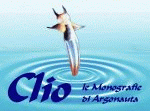
Clio Supplemento a Argonauta 7-12 2012
 |  |
Murella muralis (O.F. Müller, 1774)
La specie che troviamo rimanendo in Toscana, ma che ritroveremo poi fino in Sicilia, è Murella muralis (O.F. Müller, 1774). Questa è una specie che pone molti interrogativi, innanzitutto è stata descritta per l'area di Firenze, dove ancor oggi si rinviene , sembra però legata geneticamente, alle altre specie presenti in Sicilia da dove probabilmente è stata introdotta in altre zone italiane fra cui, appunto, Firenze. Non ho idea sulla attendibilità delle teorie relative alle introduzioni antropiche di specie che dovrebbero essere originarie di altre aree e che si rinvengono, in maniera difficilmente spiegabile altrimenti, in aree talora distanti e , in molti casi, senza che vi sia continuità fra il luogo presunto originario e quello del presunto apporto antropico, ritengo molti di questi casi frutto di supposizioni talora affascinanti ma di difficile dimostrabilità. Murella muralis (O.F. Müller, 1774) è uno dei casi per i quali si suppone una trasmissione umana, probabilmente è così, io mi limito a constatarne la presenza nelle località dove essa è stata da me rinvenuta lasciando ad altri le valutazioni relative alla sua reale origine. Alcuni esemplari li ho raccolti personalmente in varie zone delle colline fiorentine, fra cui Fiesole (FI) e Arcetri (FI), su vecchie mura, generalmente nascosti in cavità durante periodi secchi e, in attività durante e dopo le precipitazioni in stagione estiva e autunnale. La specie si rinviene anche all’Isola D’Elba, sulle mura del porto di Portoferraio (LI), personalmente non l’ ho più rinvenuta fino a Civitavecchia dove l’ho trovata, comune, sulle mura della fortezza in porto. | The species that are staying in Tuscany, but until then we will find in Sicily, is Murella muralis (O.F. Müller, 1774). This is a species that raises many questions, first of all the species was described for the area of Florence, where even today it is found, seems, however, linked genetically to other species in Sicily where it was probably introduced in other Italian areas, including, of course, Florence. I have no idea about the reliability of the theories relating to human introductions of species that should be coming from other areas and that are to be found in an otherwise difficult to explain, sometimes in remote areas and, in many cases, without that there is continuity between the place alleged the original and the alleged anthropogenic inputs, I think many of these cases the result of assumptions sometimes fascinating but difficult demonstrability. Murella muralis (O.F. Müller, 1774) is one of the cases for which it is assumed that human transmission, it probably is, I just see that it is a presence in the localities where it was found by me leaving to others the assessments of its real origin. Some examples I have personally collected in various parts of the Florentine hills, including Fiesole (FI) and Arcetri (FI), on old walls, usually hidden in the cavity during dry periods, and activity during and after rainfall in summer and autumn. The species also occurs on the Island of Elba, on the walls of the port of Portoferraio (LI), personally l have found to Civitavecchia where I found it, common on the walls of the fortress in the harbor. |
